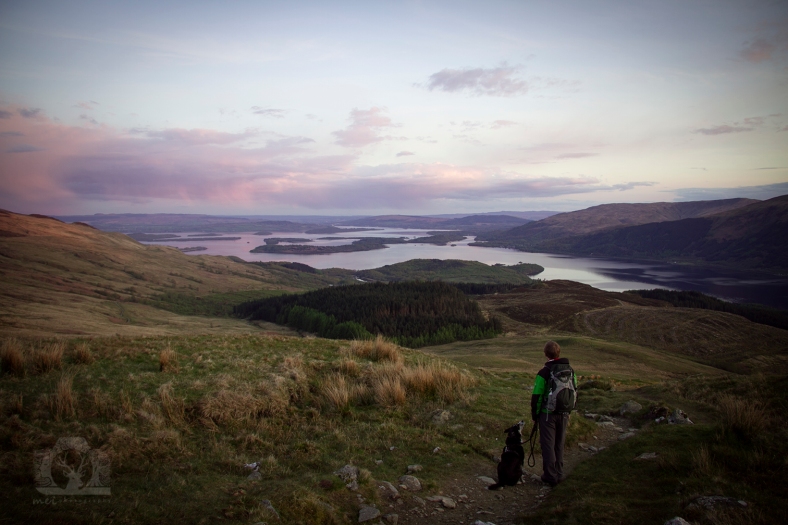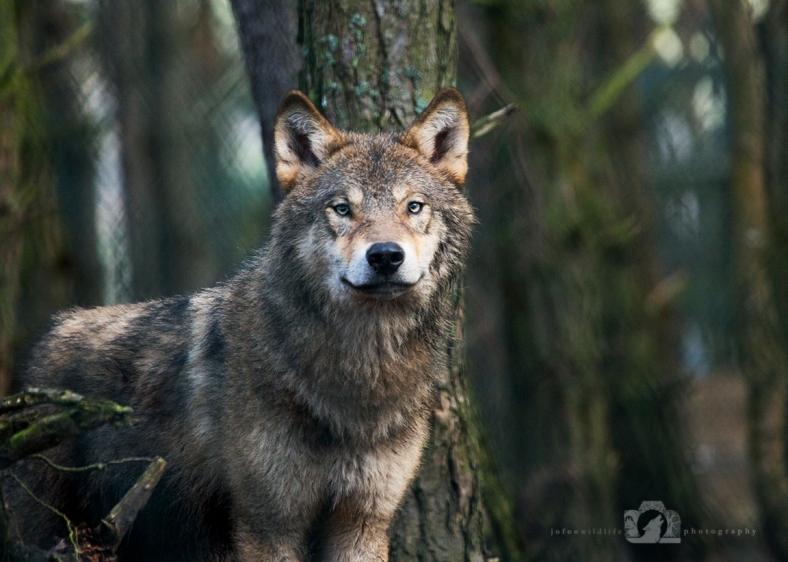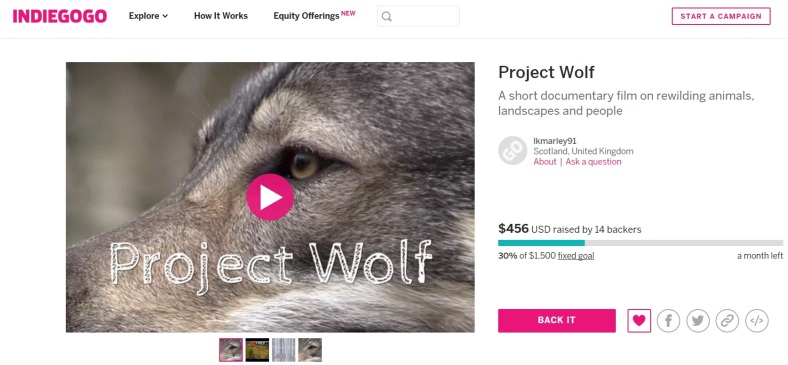
As many of you are already aware, wolves are a big part of my life and I keep finding new ways to help these wonderful animals out.
Imagine my delight last year when I saw the advert for volunteers to be part of Project Wolf a new study by Trees for Life. The aim of the project is to:
“Create a landscape of disturbance within and around the woodland area at Dundreggan, keeping any deer on their toes and less likely to spend time munching seedlings.”
Trees for Life are dedicated to restoring the Caledonian Forest and rewilding Scotland by protecting and bringing back native flora and fauna. Rewilding is a complex subject and is often confused with species reintroductions. Reintroductions play a role in rewilding but they don’t make up the whole story. However, investigating the possibility of reintroducing keystone species like the lynx and wolf is an important part of the process and provides an interesting backdrop for an innovative project.
The first year of the trial took place in 2016 and 2017 sees it return to the wilds of Dundreggan Conservation Estate, Glenmoriston, in the Scottish Highlands. The project runs in spring and volunteers are required to work in “human packs” of three and mimic the behaviour of wolves by causing a disturbance in the study area. And by “mimicking behaviour”, I don’t mean howling and hunting, but instead being active during the time of day that wolves would be and making their presence known by moving around the wilds of the Scottish countryside.
Wolves are crepuscular animals which means they are more active during dawn and dusk. Many mistake this for being nocturnal but they will sleep during both the cold of the night and the heat of midday. Put simply, it’s much easier for a wolf to be up and about during the cooler, slightly darker times of the day. And so the volunteers will need to be crepuscular and in some cases, work through the night on rough terrain in typical Scottish weather. They must be available to commit to the project for a month at a time and be able to be awake at strange hours. They also have to be prepared to spend most of their waking hours in the dark. These”wolves” must work as a pack and protect the flora in their territory of Dundreggan.
Studies of wolves in places like Yellowstone have demonstrated that one of the most effective ways these large predators help restore and rewild the countryside, is not only from hunting animals like deer and thus controlling the population size, but also because their presence alone creates “landscapes of disturbance”. When left without an apex predator, ungulates like sika and red deer wreak havoc on the countryside. Their tendency to eat tree seedlings and trample young growth means that Scotland is barren of its native flora in many places in the country.

A typical view of Scotland’s landscapes with few trees thanks to overgrazing by deer and hillside sheep-farming
The role of the human wolves is to replicate the activity of large predators by causing unpredictable disturbances in the woodlands. This prevents the deer from casually grazing at seedlings and encourages them to avoid areas of “wolf” territory. Areas which aren’t destroyed through early grazing have a better chance at survival and thus a better chance for forest regeneration. For rewilding to be successful, conservationists need to find ways to repair the whole ecosystem.
What makes 2017 an even more interesting year for Project Wolf is that wildlife and nature documentary filmmaker Lisa Marley has recently launched her Indiegogo Campaign to fund a film on the project.
This isn’t Lisa’s first time behind the wildlife documentary lens. Her award-winning film “Red Sky on the Black Isle”, about 22 raptors (in this case – red kites and buzzards) which were poisoned in 2014, has been shown around the world in three languages (English, Spanish and French) and has attracted widespread news coverage. It also had more direct impacts for the community of the Black Isle as the case is being reviewed and Ross-shire now benefits from a full-time wildlife officer working in the area.
“I think rewilding is a discussion that really needs to start now, and it’s important for people to realise that rewilding is about much more than reintroducing big animal species – it’s about restoring whole ecosystems. The Project Wolf study is particularly interesting as it’s getting humans back to nature and reminding us how important that connection is as well.”
– Lisa Marley
Lisa is a shining example of the role science communication plays in conservation efforts around the world. By finding creative ways to engage people and show them why protecting the wilderness matters, we’ll make bigger impacts and more progress. Science education is vital for successful conservation stories. With her undergraduate MA in Anthropology and Film from the University of Aberdeen, a postgraduate MA in Documentary from UWE and a passion for telling stories about how humans connect with nature, this Aberdonian lass is more than qualified for the job and I’m really excited to see what she’ll do with this next film. So much so that I’ve already backed her campaign and so can you! Even £1 will help get this film made and this story shared far and wide. Who knows what impacts it will have to shape the future of rewilding in Scotland?
Project Wolf is still in its primary stages and will require more work before any conclusions can be drawn. Skeptics wonder if the deer will become habituated to the human “wolf pack” activity and be harder to move on. Supporters of the project are positive and excited about the pending results not only regarding the impact of the volunteers themselves but also about the impact that a month in nature might have on them. Our connection with nature is essential for our health and with our tendency to connect online instead of outside, there’s possibility for this project to show value in a variety of ways.
Whatever the results, the study relies heavily on funding from Trees for Life and on volunteers who make it all happen. You can help out by donating money to allow them to continue their incredible work, by planting trees and by volunteering. Project Wolf is running from 25th March-28th April or from the 1st-31st of May 2017. Last I heard, the month in May is full but they were looking for someone to start this Saturday for the April. Interested? You can apply now! Email volunteer@treesforlife.org.uk for more information.
I know I’ll be applying in 2018…


Book suggestion: “A View from the Wolf’s Eye” by Carolyn C. Peterson… a memoir of her life with her husband-scientist, Rolf Peterson, living in a rustic cabin on Isle Royale in Lake Superior (above Michigan) studying wolves & their interplay with the moose population. The whole island is a national park with no roads & no vehicles, except for a few operated by rangers at the dock area (camping permitted / lots of trails / a motel run by park service).
Road Scholar provides a nice hike-study trip there for people age 50 & above (program # 1583RJ).
Wolf population was decimated & moose are overpopulated; the NPS is, after lots of study/red tape getting nearer to introducing wolves back onto the island. (The occasional ice bridges from Canada which allowed wolf migration no longer occur.)
Thanks Donna! I actually met Rolf Peterson during my WCMT research in 2013. I’d love to read this book. I’ll add it to my collection.